Industry
P-18PL - New Iteration of the Polish Long Range Radar
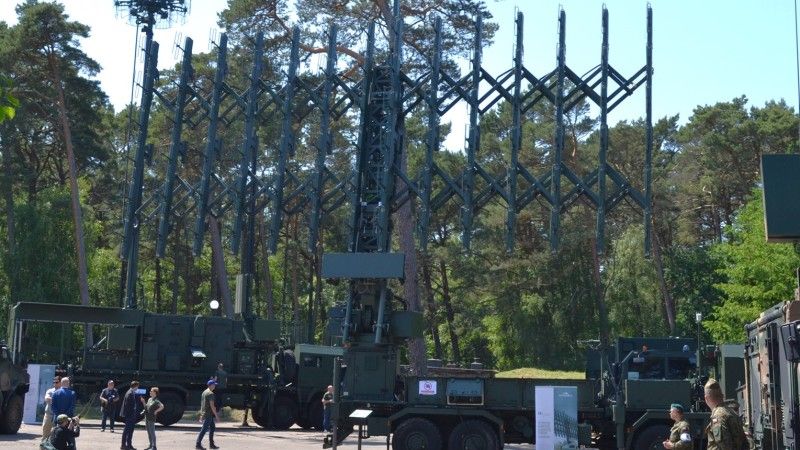
Photo. M. Dura
The P-18PL radar is a good example of the capacity offered by the Polish defence industry and research facilities, when it comes to designing a modern product that is usable for the Polish Armed Forces - and also attractive for foreign customers. It is worth explaining why this radar is highly esteemed by industry experts.
Sponsored Article. Written in Collaboration with PIT-RADWAR.
P-18 radars, also known as Laura, are operated within the VHF range - they were often referred to as rakes by the troops. The antenna of this radar was reminiscent of the garden tool used to move around leaves and hay in gardens and fields. A similar design has also been applied in the case of one of the latest Polish VHF radars, the P-18PL. The experts in agricultural machinery and tools may say that the radar is more reminiscent of a harrow, not a rake. This does not change the fact that meter band antennas do not seem modern at first glance.
This is why the contract signed on 19th December 2023 by and between the Armament Agency, and the PGZ-NAREW consortium, for the delivery of 24 P-18PL early warning radars for the Air Force, might have been surprising for people not proficient in radar technology. These radars work in the VHF range (low frequency) which has been often attributed to worse accuracy, inferior discrimination capability, and relatively big antenna arrays.
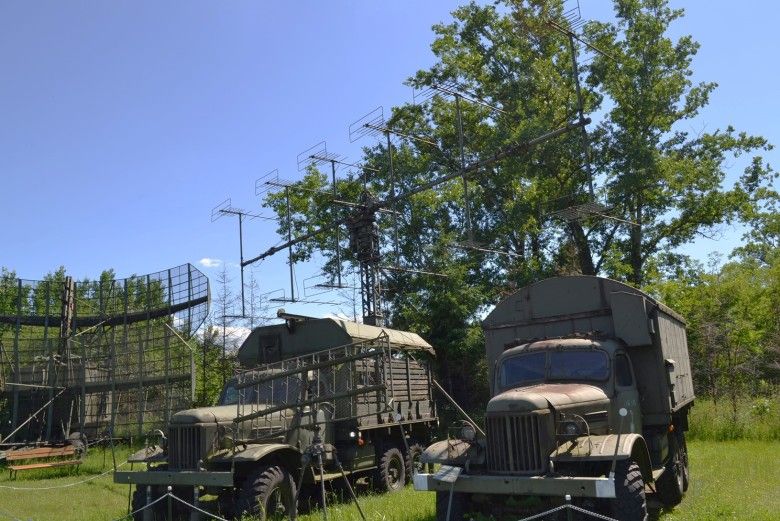
Photo. M.Dura
PIT-RADWAR S.A., the manufacturer of the P-18PL radar, has been offering radars to the military user for years - featuring much more modern-looking phased arrays operating in microwave bands, which entails a broad range of benefits, like smaller size and diminished weight (and thus, ability to use smaller carrier platforms) with higher accuracy of measurement of target parameters, to the levels allowing for guiding PGMs.
Advantages of the Meter-band Radars
Going below the GHz range, down to the meter band (like in the case of the P-18PL Radar) may entail several benefits for the air/missile defence systems. As it turns out, radars as such, when fused with modern technologies and solutions, work well in early warning and early detection. They can be used for preliminary target designation for the air defence system - they may be working with Pilica Plus, Narew, or Wisła batteries here. These functions are achievable for several reasons.
First, the scattering or reflection of radar signal has a different profile in microwave and meter bands. This stems from the wavelength’s relation to the target size or the coating material. The meter-band waves are resilient when facing any means that are used to reduce the RCS and the echo strength.
The carrier frequency also has an impact on the atmospheric attenuation of the signal. In general, the higher the frequency (shorter wave), the more significant the attenuation is. This is one of the reasons why meter-band radars can see farther than centimetre-band radar with an identical power output. One should remember that given the technological advancement, and the physical nature of the process, it is easier and cheaper to create a high-power transmitter unit operated in the meter band, than an equivalent microwave system.
These features make the VHF radars predisposed to act as long-range sensors. The longer range is also dictated by the fact that the meter-band radars are far more resilient to weather interference. Any weather anomalies like clouds, rain, storms, and so on, produce a weaker echo in the meter band range, than within the microwave range. And this is why the weather radars are operated in a centimetre band and higher.
Most of the EW jammers that counter radars usually create jamming signals in the frequency range above 1 GHz. Anti-radiation missiles work in a similar frequency range - the threat levels posed by those weapons are also much lower.
One should note that the different reflection profile for the VHF radars, the P-18PL Radar has a greater ability, compared to GHz radars, when it comes to detection of stealth threats. To attenuate or scatter the radar signals, the manufacturers of stealth aircraft and cruise missiles change the shape, coating, and materials used to create the airframes.
This is only effective for specific frequency ranges, used in the centimetre radars primarily (like the Polish short and medium-range radars: Bystra, Sajna, Odra), and up to the decimeter range (used in the Polish long-range NUR-12M, NUR-12ME, WARTA radars, or in the Italian RAT-31DL design). For the P-18PL radar working in the meter range, RCS reduction like this may be less effective.
Limitations Associated with „Meter” Band Radars
The VHF band also entails some limitations and challenges. The long-wave radars offer limited accuracy and angular discrimination. These parameters are becoming increasingly better as the antenna beam becomes more narrow. The beam is narrower, the greater the ratio is between the antenna size and the wavelength. As the wavelength becomes greater, the antenna arrays need to be bigger (the lower the frequency is, the bigger the antenna array should be).
For retaining similar levels of accuracy and angular discrimination, applicable to GHz radars, the VHF radars need to use a much bigger antenna array. And this is why meter-band radars are not used on aircraft and in self-propelled, autonomous anti-aircraft systems. But even for ground-based radars, the designers had to come up with a compromise, and to keep those systems mobile, the antenna array size had to be limited, and thus the beam would be broader. This is one of the reasons why VHF radars are not directly used for fire control purposes, like the provision of guidance for the SAM systems.
Meanwhile, the mobile medium and short-range surveillance radars (where angular accuracy and discrimination remain relevant, with a limited antenna array size) use decimetre and centimetre (S, C, and X-band) radars. For missile guidance systems, centimetre radars (C-band and X-band) are used. AAA systems like Loara or Gepard utilize millimetre Ku- and K-band radars.
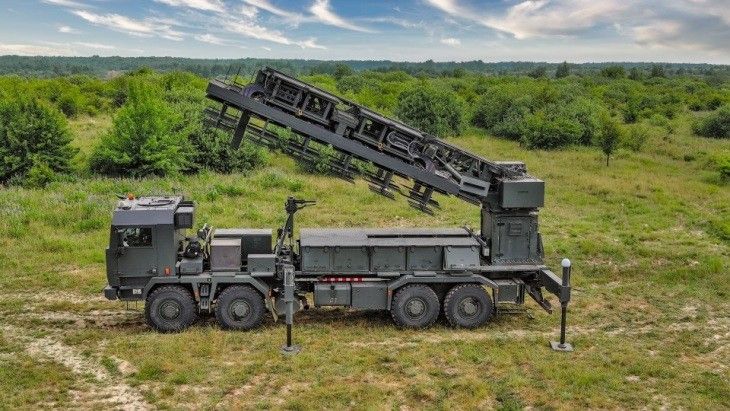
Photo. PIT RADWAR
This does not change the fact that VHF radars may be used in a warning role for the anti-aircraft systems (signalling the incoming threat), and for the purpose of preliminary target designation (indicating the airspace sector where the detected threat is). This was the role assigned to the P-18PL prerequisite, the Soviet P-18 Laura radar, that used to be operated in Poland. The radar was used both by the radar, as well as the artillery/rocket components. The Rocket and Artillery Component became the key user of the Laura system - these radars were used in S-125M Neva-M and S-75M SAM squadrons.
Thanks to early warning and target detection radars as such, specialized missile guidance radars designating the targets for the missiles directly could have been activated for just a brief moment to find the targets (not detect them) and define their parameters. This increased the survivability of SAM systems that only emitted radar signals for a brief moment preceding the launches. The radars were disabled immediately after the missile hit the target.
This operational practice has been battle-proven by the Ukrainians, with regard to the Western systems - and it turned out to be effective. The official data shows that the Russians have not managed to hit any of the Patriot fire control radars deployed to the launch location. This probably stems from the reasonable tactics adopted for this radar, which becomes active only for a brief moment in relation to a known threat. Once the radar emits the signal, it also shows where the battery is, encouraging the enemy to launch a counterattack (using anti-radiation missiles for instance).
More importantly, the limitations stemming from selecting the VHF band have been addressed by the Polish engineers in the P-18PL radar - thanks to modern technological solutions applied, paving the way for the meter-band radars to be used in applications that had not been available to them before.
Unique, Modern P-18PL Antenna Array
These modern technologies made it possible to improve mobility that is very much limited for the meter-band radars - given the antenna size. With large, mechanically complex VHF antennas, the deployment and folding time are much longer than for centimetre and decimeter systems. This problem was addressed in the P-18PL design through the application of an ingenious hydraulic deployment and folding system for the antenna array, using the operating principle of a pantograph.
For that purpose, the antenna array has been arranged on a grid-structure mast that is deployed to the operating position with the use of hydraulics. The mast consists of two elements that can be additionally folded, and the antenna array’s inclination can be changed by 10 degrees. In this way, the primary radar’s antenna array (depending on the mode of operation) can be set 10 or 20 degrees in relation to vertical position. The series-manufactured batch of P-18PL radars would feature a single angle for the antenna array inclination, instead of a two-section pole.

Photo. M.Dura
When deploying the whole antenna array, the mast goes up first, and it is followed by 14 columns, covering the whole width of the antenna. This array of columns is formed by four pantographs, two per wing, powered by hydraulic actuators installed on a pole. The antenna array is folded in reverse order.
Thanks to the solution as such, the Polish radar is uniquely mobile for its class. The radar can be deployed from transport to operational setting in less than 30 minutes, despite the antenna ray being a couple of times bigger than the S-Band TRS-15 radar’s.
The antenna array is what distinguishes the P-18PL system. Contrary to most of its foreign counterparts, P-18PL uses an AESA array. The reception beams are digitally shaped in azimuth and elevation planes.

Photo. M.Dura
This has been possible with the antenna array being formed by 84 identical semi-conductor T/R modules that replaced a single, centre-mounted transmitter usually used in radars as such, especially in the legacy designs. These are air-cooled modules and they have been based on COTS transistors.
Each of the modules features transmitter units (creating probing signals with specific parameters, like frequency, phase, and modulation), and is also connected with specific Yagi-Uda antennas, distributed on the antenna framework with 14 columns and six lines. Thus the transmission beam can be flexibly formed in relation to the antenna itself. This array of transmitters, given their arrangement and shape, can be reminiscent of a rake.
»#PHOTO[ id: 1616521 | desc: Above the antenna array, two extra Yagi-Uda antennas have been installed, facing the opposite side - helping to eliminate the main antenna’s rear lobe detections. ]
Above the antenna array, two extra Yagi-Uda antennas have been installed, facing the opposite side - helping to eliminate the main antenna’s rear lobe detections.
The whole antenna array structure, before deployment, is 4 meters tall and 2.5 meters wide. After deployment, the antenna array is 6 meters tall and 14 meters wide, with the top being more than 11 levels above the ground. Thanks to such a solution, a 3D radar was created. Not only does it allow for defining the azimuth and range, but it can also determine the elevation (and ceiling). Other VHF radars are usually 2D - this means that a radar height finder needs to be used as well (Like PRV-13 for P-18 Laura used by the Polish Rocket/Artillery Component).
The P-18PL provides 360-degree coverage, as the antenna is mechanically rotated in the azimuth plane, with a refresh rate ranging from 6 to 30 seconds. In circumstances as such the radar can work in short-, medium-, and long-range settings, with a refresh rate depending on the selected mode. The radar offers an effective detection range of up to 600 kilometres, with a ceiling of up to 120 kilometres.
For air threats (such as aircraft), the Earth curvature and radar horizon are the key limitations, in relation to the altitude the aircraft is at. Thus, the full detection potential can only be deployed when observing objects travelling at an altitude of several kilometres, like ballistic missiles. In the elevation plane, the digitally formed reception beams offer 25 degrees (search mode) and 45 degrees (tracking mode) coverage.
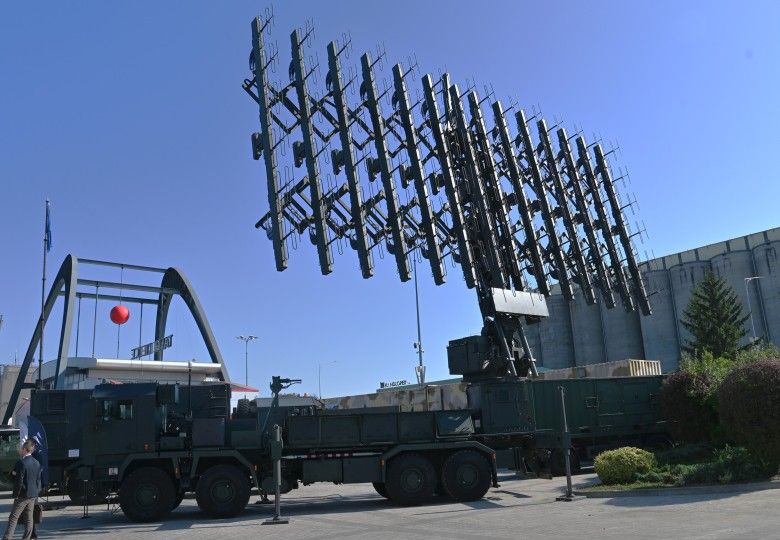
Photo. M.Dura
The radar also offers sector scan mode, when the antenna is stationary, with electronic beam forming and 8 and 12 seconds refresh rate. The sector of observation is then diminished to 90 degrees in the azimuth range, and 0-40 degrees in the elevation plane (up to 50 degrees when tracking). However, the range goes up to 900 kilometres, with a maximum ceiling of 160 kilometres - in the so-called very long-range mode.
Focusing the radar’s potential in a limited sector makes it possible to detect and track even small and fast ballistic missiles (even in outer space), and hypersonic threats. The shortened refresh rate enhances the tracking algorithms that draw the flight trajectory of the tracked threats.
Good capabilities in the detection of varied threats are available thanks to the signal processing system that automatically follows the threat profile. A different processing path is used for ballistic missiles, and a separate path is applied when it comes to conventional air-breathing targets. Another processing methodology is applied when it comes to hovering helicopters (normally eliminated by the system that ignores the fixed echoes).
During testing it turned out that P-18PL radar can even detect artillery shells at a close distance (aerial targets with RCS of 0.0001 square meter). The P-18PL may turn out to be useful in the detection of small UAVs then (like FlyEye or Orbiter). One should also stress that all of the above is done with relatively (in the VHF realm) high accuracy when it comes to determining range and azimuth. The accuracy is similar to the decimeter band radars.
The processing system makes it possible to track up to 400 objects at once, and each of them is classified based on the movement profile and echo signal features (independently from the IFF system). The process in which the targets are detected, tracked, and classified (IFF identification included) can be entirely automated, which takes a major burden off the operator’s shoulders - he can always intervene here.
Despite all of those capabilities, the P-18PL radar is primarily used as the preliminary detection radar capable of observing a myriad of air threats, designating targets for air/missile defence battery radars, and ATC, and supporting its own aviation assets. Nonetheless, work is underway, aimed at enhancing the P-18PL’s role in the air defence system.
Due to its broad set of capabilities, the P-18PL radar has been readied for working with the DUNAJ, SAMOC/ZENIT, and, in the future, the Surveillance Management Systems, and the IBCS battle command system used by Wisła and Narew batteries.
What is the P-18PL Radar Made Of?
All elements of the P-18PL radar are carried on two vehicles, and a single, twin-axle trailer. The first vehicle is based on Jelcz 882 with a short, armoured driver’s cabin. This vehicle may be replaced with Jelcz P112.57 in the series manufactured batch. The vehicle is designated as the WA-18 antenna unit, and it carries the whole antenna array of the P-18PL radar.
The specialist bodywork consists of:
- Rotating base that hosts the antenna array mast of the primary radar, the IFF secondary radar, the hydraulic antenna array deployment system, and systems controlling the antenna beams and signal processing.
- The stationary portion with antenna motors, two moto-gearboxes, driver for antenna drives with inverter units for powering the moto-gearboxes, computerized diagnostics and control suite for the radar, navigation system, IDZ-50 long-range interrogator supplied by PIT-RADWAR, hydraulic power unit for the platform actuators (including four levelling supports), and two boxes for extra equipment, along with a power wire drum, used to connect the WA-18 unit with the JZ-18 PSU.
- The navigation suite on WA-18 consists of two subsystems: GNSS/INS. These make it possible to automatically establish the radar coordinates and its position in relation to the geographic north, without forcing the crew to do any additional measurements. This is done with the use of an HGPST-T GPS receiver and a TALIN INS unit. The crew is supported when the radar is relocated by a navigation terminal in the WA-18 cabin.

Photo. PIT-RADWAR
A similar terminal with a DAGR GPS receiver is placed in the WW-18 designator unit’s cabin - the second vehicle of the P-18PL radar system. The vehicle has been based on the Jelcz 662 truck (that could be replaced by an 8x8 Jelcz P882.57 in the series manufactured lot), which also integrates a 20 ft. armoured container that is protected from small arms fire and fragmentation (like the driver’s cabin). The container features operational and technical compartments.
The operational compartment features, primarily, work stations for two operators and radio/wired communications systems. One of those stations, the so-called WSO portable operator station, can be repositioned and connected to the radar via the means of fibre optical wire that can be up to 1 kilometre long. The WW-18 designation vehicle can be separated from the WA-18 antenna unit by several hundred meters, also thanks to a fibre-optical connection. That connection is used to transmit data on tracked and detected objects, system diagnostics, and remotely control the radar systems.
The operational portion of the container features a stand for the confidential data processing systems, and a stand for the communications suite facilitating wired, or RF connectivity with the systems environment. To facilitate the operation of the radio, a 10-meter tall telescopic antenna has been placed in the rear of the container. Should a need as such emerge it may be removed and deployed on the ground, for instance, if the WW-18 unit is placed in a shelter.
The technical compartment on WW-18 contains a power generator (supplying power to the unit in the event of it being located further away from WA-18/JZ-18 set), an air filtering unit (used to protect the crew and equipment from contamination), an A/C unit, and a stand for cable drums (with wiring used when organizing the radar operation and establishing connection with associated systems).
The JZ-18 power unit is the third element of the P-18PL radar complex. It consists of a container on a twin-axle trailer. In the series manufactured lot it would come in the form of a 496 trailer by HSW S.A.’s Autosan branch in Sanok). The trailer is towed by the WW-18 unit when on the move. The container features two diesel-powered generators, with a power output of 80 kVA each. When the radar is active, only one power unit is used, while the other ensures redundancy. The JZ-18 features a power unit’s control system, and automation systems cabinet that switches the power source and manages the power delivery as needed.
The fuel tank allows for uninterrupted 24 hours of operation of the radar under the biggest load. This time can be extended by hot refuelling, without a need to switch off the power generators.
The „radar complex” term is not an overstatement here. The complex integrates the P-18PL with the Mark XIIA (mode 5) IFF interrogator. The system consists of an antenna array consisting of a main antenna and two side antennas - and this system, for now, is placed below the primary antenna array of the P-18PL radar. For the series-manufactured system, it may be placed above, as dictated by the planned change in the antenna array deployment method.
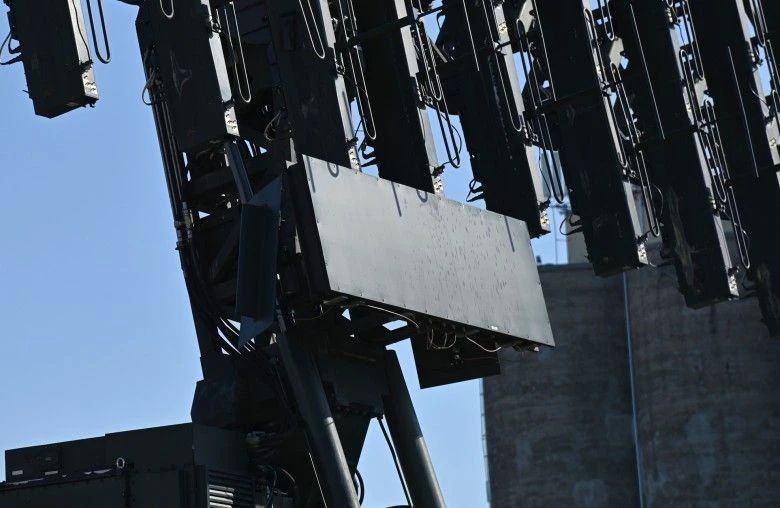
Photo. M. Dura
Thanks to the set of three IFF antennas, three antenna profiles are available:
- Sum (for interrogation);
- Differential (for mono impulse estimation of direction of reception of response)
- 360-degree (used to eliminate IFF responses received by side lobes of the primary IFF antenna).
One should remember that P-18PL radar can also be used as a reconnaissance sensor. The operators are informed by the signal processing unit, that the enemy operates jammers. They can determine the signal power for the jammer, its frequency, and its bearing.
Why Did the Polish Armed Forces Select the P-18PL Radar?
The P-18PL Radar is a good example of how differentiation of radars in the domain of bands enhances the capability of the whole surveillance system, along with its survivability. The VHF radars have been commonly used by Warsaw Pact nations, and are still manufactured by Russia (1L125 Nyobiy-SV), China (JY-27), or Belarus (Vostok-D).
The aforesaid nations assume that they may face stealth threats. VHF radars may be able to counter such threats. For the Western nations, such a threat had been less of an issue and VHF radars were rarely commissioned. Centimetre and decimeter band systems became common instead.
The situation is changing, as stealth air platforms are being currently developed by both China and Russia. VHF radars are also needed in the West, hence numerous export opportunities ahead, for the P-18PL system. One should note that the Polish solution differs from the Chinese or Russian counterparts. Not only does it use state-of-the-art technologies, but it also features unique technical solutions, such as the signal processing unit, or the AESA antenna array.
It is highly plausible that once the P-18PL is commissioned in the Polish military, and integrated with Wisła, Narew, and Pilica+ systems (and plugged into IBCS), a group of customers interested in this solution would immediately appear, having an operational confirmation of what had only been theorized in testing before.
It is also probable as P-18PL is a system that is expected to be continuously developed into the future. This will be evident in the series-manufactured lot, for which it is expected that the antenna arrangement and deployment systems would be redesigned, and vehicles for the WA-18 and WW-18 units replaced (to unify the P-18PL system with Wisła and Narew batteries). New communication systems like digital R-460A and RKP-81000 radios are expected to be integrated into P-18PL as well.
This will make it possible to continuously enhance the radar’s performance in the future. Further data fusion and processing methods may be introduced as well. It is hence certain that new modes of operation enhancing the radar’s capabilities will be made available to the users. The final shape of the radar is to be unveiled in late 2027 when the first series manufactured RWW P-18PL radar is to be delivered to the Polish military.
